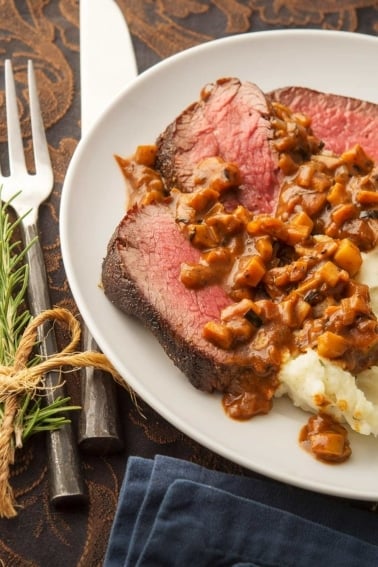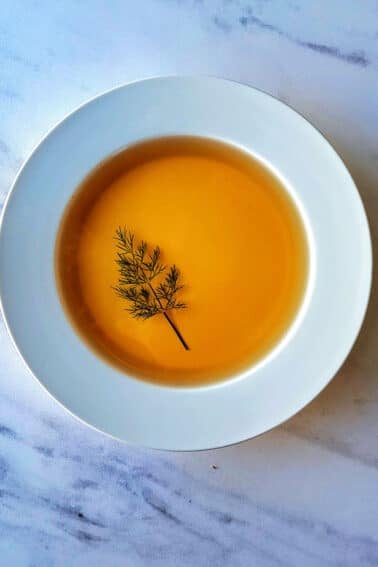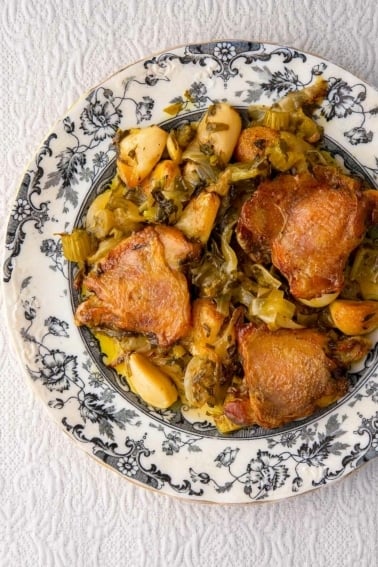As an Amazon Associate I earn from qualifying purchases.
Duck with bigarade sauce is the original duck a l’orange, dating back to at least 1825, and likely before that. It’s a classic for a reason.

Before there was the gloppy 1960s version of duck a l’orange that tastes more like cheap, steam-table Chinese sweet-and-sour sauce, this classic version of the recipe is lighter and just a little bitter — the dish was originally made with bitter Seville oranges, and if you can find them, by all means use them.
A good substitute for a Seville orange is the juice of 1 orange, 1 lime and up to 1 grapefruit; I usually go with a half grapefruit and eat the rest.
Citrus and waterfowl just seem to go together, and, like my Goose Breast with Orange-Ouzo Sauce, this one also hinges on oranges. They are also in season at the same time here in Northern California. The sauce should be made while the duck is resting.
If you don’t cook ducks often, here is my tutorial on how to sear a duck breast. I also have a great video on how to cook a duck breast here.
Bigarade sauce originally uses sauce espagnole as its base, or, alternatively, glace de viande. Both are time-consuming to make, as are many classic French sauces. If you don’t want to make your own demi-glace, you can buy glace de viande online.
Another option is to boil regular beef or duck stock down by half — this works fine, but be sure to get the lowest sodium stock you can find or the bigarade sauce will get too salty.
If you want the more contemporary version of bigarade sauce, you’ll want my recipe for duck a l’orange.
Duck Bigarade
Ingredients
- 2 duck breasts
- Salt
- 1 tablespoon duck fat, lard or olive oil
- 1 teaspoon flour
- 1 shot glass of Grand Marnier or other orange liqueur (optional)
- 1 tablespoon cider vinegar or sherry vinegar
- 1/4 cup demi-glace, or glace de viande
- Juice of an orange (see above)
- 1/2 an orange, quartered and sliced thinly
Instructions
- Salt your duck breast halves at least 30 minutes before you begin. Let them rest at room temperature during this time.
- Heat the duck fat in a medium saute pan over medium-high heat for 1 minute. Meanwhile, pat the duck breasts dry with a paper towel. Lay the breast halves down in the hot fat and cook, undisturbed, for 5 to 8 minutes. Listen for a steady sizzle, nothing too violent. If the sizzle gets to fierce, turn the heat down to medium.
- Check the skin of the breasts: If they are browned and crispy, turn them over. If not, give them another minute or two. After the breasts are turned, cook for another 2 to 3 minutes. You might also want to "kiss" the thicker side edges of the breast, just to brown them well. When the breasts are cooked, set aside on a cutting board and grind black pepper on the skin.
- To make the bigarade, turn the heat to medium and sprinkle the flour into the pan and stir to combine; this makes a roux. Let it cook, stirring occasionally, until it is the color of coffee-with-cream, about 5 minutes. Add a pinch of salt and stir to combine, then add the glace de viande, vinegar and the Grand Mariner if using. Everything will spatter, but whisk in the orange juice until it gets to a consistency you like. You may need more or less than a whole orange's worth.
- To serve, lay down some sauce, top with slices of the breasts. Garnish with thin slices of orange. It’s excellent with mashed potatoes or a wild rice pilaf.
Notes
Nutrition
Nutrition information is automatically calculated, so should only be used as an approximation.





In step 4, do you add the oil before you sprinkle the flour or are you using the fat rendered from the breasts, or both?
thx, Darren
Darren: The oil goes in with the breasts. They will render out a lot of fat, when you then use to make the roux.